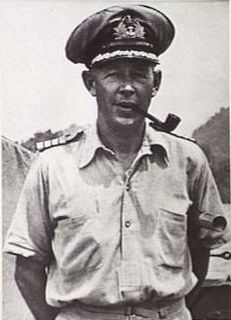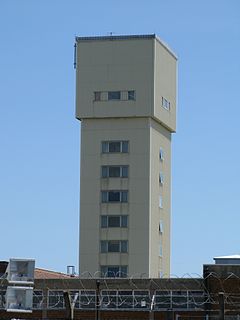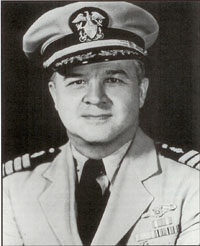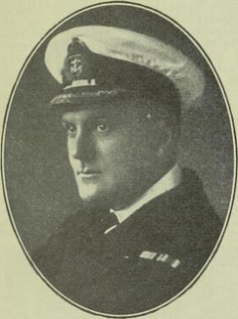This article relies largely or entirely on a single source .(July 2009) |
The Royal Australian Navy School of Underwater Medicine (RANSUM) is an instructor-led training course based at Sydney, Australia.
This article relies largely or entirely on a single source .(July 2009) |
The Royal Australian Navy School of Underwater Medicine (RANSUM) is an instructor-led training course based at Sydney, Australia.
| | This section needs expansionwith: the history beyond the foundation, and of the current status, facilities, and impact of the organisation. You can help by adding to it. (July 2009) |
Before 1961 medical support at the diving section of HMAS Watson was provided by the District Medical Officer, Surgeon Lieutenant Commander Shane A.C. Watson, whose interest in diving led to research in injuries related to marine animals. [1] Medical Director-General of the Royal Australian Navy, Surgeon Rear Admiral Lionel Lockwood, recognized the need for a specialisation in diving medicine and appointed Surgeon Lieutenant Commander Rex Gray to service in Underwater Medicine. Dr. Gray was an anaesthesiologist and accepted this commission on 20 February 1961. [1]
Dr. Gray was trained as a diver and sent to England for seven months to learn about modern diving medicine. He visited the Royal Naval Medical School at Alverstoke, the R.N. Physiological Laboratory, the Submarine Training School at HMS Dolphin, Diving School HMS Vernon, and the RN Air Medical School at Seafield Park. [1] Following his time in England, he travelled to the United States, where he spent two weeks each in the Experimental Diving Unit, Washington Navy Yard, and with the Medical Research Laboratory, Submarine Base, New London, Connecticut, returning to Australia in July, 1962, aboard HMAS Supply. [1]
The first School of Underwater Medicine Report was issued in 1963 and outlined the need for communication with organizations with similar interests such as carbon monoxide poisoning and recompression chambers. [1] The first eight-day Underwater Medicine course was held in May 1963, presented by Surgeon Lieutenant Commander A.A. Reid, and was followed by a thirteen-day course by Surgeon Lieutenant Commander B.M. Wadham, in June 1963. [1]

Ian Edward Fraser, was an English diving pioneer, sailor and recipient of the Victoria Cross, the highest award for gallantry in the face of the enemy that can be awarded to British and Commonwealth forces. Fraser was born in Ealing in Middlesex and went to school in High Wycombe. After initially working on merchant ships and serving in the Royal Naval Reserve, he joined the Royal Navy at the start of the Second World War. After being awarded the Distinguished Service Cross for actions while serving on submarines, he was placed in command of a midget submarine during an attack in Singapore codenamed Operation Struggle. For his bravery in navigating the mined waters, and successfully placing mines on a Japanese cruiser, Fraser was awarded the Victoria Cross.

HMAS Penguin is a Royal Australian Navy (RAN) base located at Balmoral on the lower north shore of Sydney Harbour in the suburb of Mosman, New South Wales. Penguin is one of the RAN's primary training establishments, with a responsibility for providing trained specialists for all areas of the navy. The current commander of Penguin is Commander Bernadette Alexander, RAN.
The Submarine Escape Training Facility (SETF), also known as the Submarine Escape and Rescue Centre (SERC), is a facility used by submariners of the Royal Australian Navy (RAN) to train in the techniques needed to escape from a submarine in trouble.

HMS Oxley was an Odin-class submarine of the Royal Australian Navy (RAN) then Royal Navy (RN). Very slightly off course, near Obrestad, on the south-western cape of Norway, she was hit by friendly fire seven days after the start of World War II costing 53 lives and leaving two survivors.

Vice Admiral Sir Roy Russell Dowling, was a senior commander in the Royal Australian Navy (RAN). He served as Chief of Naval Staff (CNS), the RAN's highest-ranking position, from 1955 until 1959, and as Chairman of the Chiefs of Staff Committee (COSC), forerunner of the role of Australia's Chief of the Defence Force, from 1959 until 1961.
Captain Henry Hugh Gordon Dacre Stoker,, also known as Hew Stoker and commonly credited in films as H. G. Stoker or Dacre Stoker, was an Irish Royal Navy officer who commanded the Royal Australian Navy's submarine HMAS AE2 during the First World War. Stoker was captured in 1915 and he spent the remaining three-and-a-half years as a prisoner of war of the Ottoman Empire. He retired from the navy in 1920 to pursue an acting career on the stage and film. As an amateur athlete, Stoker competed in the Wimbledon tennis championships throughout the 1920s. With the outbreak of the Second World War, he was recalled to service in the navy, where he helped with public relations. When the war finished, Stoker returned to his acting career. In 1962, at the age of 77, he became Irish Croquet Champion.
Admiral Sir Victor Alfred Trumper Smith, was a senior officer in the Royal Australian Navy. Smith's career culminated with his appointment as chairman, Chiefs of Staff Committee—forerunner of the role of Australia's Chief of the Defence Force—from 1970 to 1975, following an earlier term as Chief of Naval Staff from 1968 to 1970.

A Submarine Escape Training Tower is a facility used for training submariners in methods of emergency escape from a disabled submarine underwater. It is a deep tank filled with water with at least one underwater entrance at depth simulating an airlock in a submarine. Since the 1930s, towers have been built for use by the Royal Navy, US Navy, Royal Australian Navy and in several other countries.
Vice Admiral Rodney Graham Taylor, was a senior officer in the Royal Australian Navy, serving as Chief of Navy from 1994 to 1997. Born in Queensland, Taylor entered the Royal Australian Naval College at the age of thirteen. Graduating as dux of his year in 1957, he later specialised in navigation and served during the Vietnam War. Commanding HMAS Vampire as well as HMAS Torrens, Taylor planned and coordinated the deployment of Australian ships during the Gulf War. Retiring from the navy in 1997, Taylor died from lung cancer in 2002 at the age of 62.

Rear Admiral Otto Humphrey Becher, & Bar was a senior officer in the Royal Australian Navy (RAN). Born in Harvey, Western Australia, Becher entered the Royal Australian Naval College in 1922. After graduating in 1926, he was posted to a series of staff and training positions prior to specialising in gunnery.
Captain Albert Richard Behnke Jr. USN (ret.) was an American physician, who was principally responsible for developing the U.S. Naval Medical Research Institute. Behnke separated the symptoms of Arterial Gas Embolism (AGE) from those of decompression sickness and suggested the use of oxygen in recompression therapy.

Capt. Charles Wesley Shilling USN (ret.) was an American physician who was known as a leader in the field of undersea and hyperbaric medicine, research, and education. Shilling was widely recognized as an expert on deep sea diving, naval medicine, radiation biology, and submarine capabilities. In 1939, he was Senior Medical Officer in the rescue of the submarine U.S.S. Squalus.
Surgeon Vice Admiral Sir John Stuart Pepys Rawlins, was a Royal Navy officer and pioneer in the field of diving medicine.

Captain John Henry Ebersole, M.D., MC USN was a pioneer in submarine medicine and radiation oncology, selected by Admiral Hyman G. Rickover to serve as medical officer aboard the US Navy's first two nuclear powered submarines, the USS Nautilus and the USS Seawolf. He was the radiologist for NASA that screened the Mercury Seven astronauts for Project Mercury. Ebersole was the radiologist responsible for the x-rays taken during the autopsy of John F. Kennedy on 22 November 1963 at Bethesda Naval Medical Center.
The following index is provided as an overview of and topical guide to Wikipedia's articles on recreational dive sites. The level of coverage may vary:

Recreational dive sites are specific places that recreational scuba divers go to enjoy the underwater environment or for training purposes. They include technical diving sites beyond the range generally accepted for recreational diving. In this context all diving done for recreational purposes is included. Professional diving tends to be done where the job is, and with the exception of diver training and leading groups of recreational divers, does not generally occur at specific sites chosen for their easy access, pleasant conditions or interesting features.

Rupert Clare Garsia was a New Zealand-born Australian navy commander and later Administrator of Nauru.
The Institute of Naval Medicine is the main research centre and training facility of the Royal Navy Medical Service.
The 4th Submarine Squadron was a unit of the Royal Navy operating conventional submarines. It was established at HMAS Penguin, Sydney, Australia, in 1949 partly to provide anti-submarine warfare training to Royal Australian Navy (RAN) and Royal New Zealand Navy personnel. The Royal Navy transitioned to nuclear-powered submarines from 1960 and notified the Australians that the 4th Submarine Squadron would be disbanded. The RAN decided to procure its own submarines to replace the squadron in the training role and purchased four Oberon-class vessels in 1963. To prepare the RAN to maintain these vessels the Royal Navy agreed to refit five T-class submarines, including at least three from the 4th Submarine Squadron, at Cockatoo Island Dockyard in Sydney. The 1st Australian Submarine Squadron was operational by 1969, upon which the Royal Navy disbanded the 4th Submarine Squadron.
{{cite journal}}: Cite journal requires |journal= (help)CS1 maint: unfit URL (link)